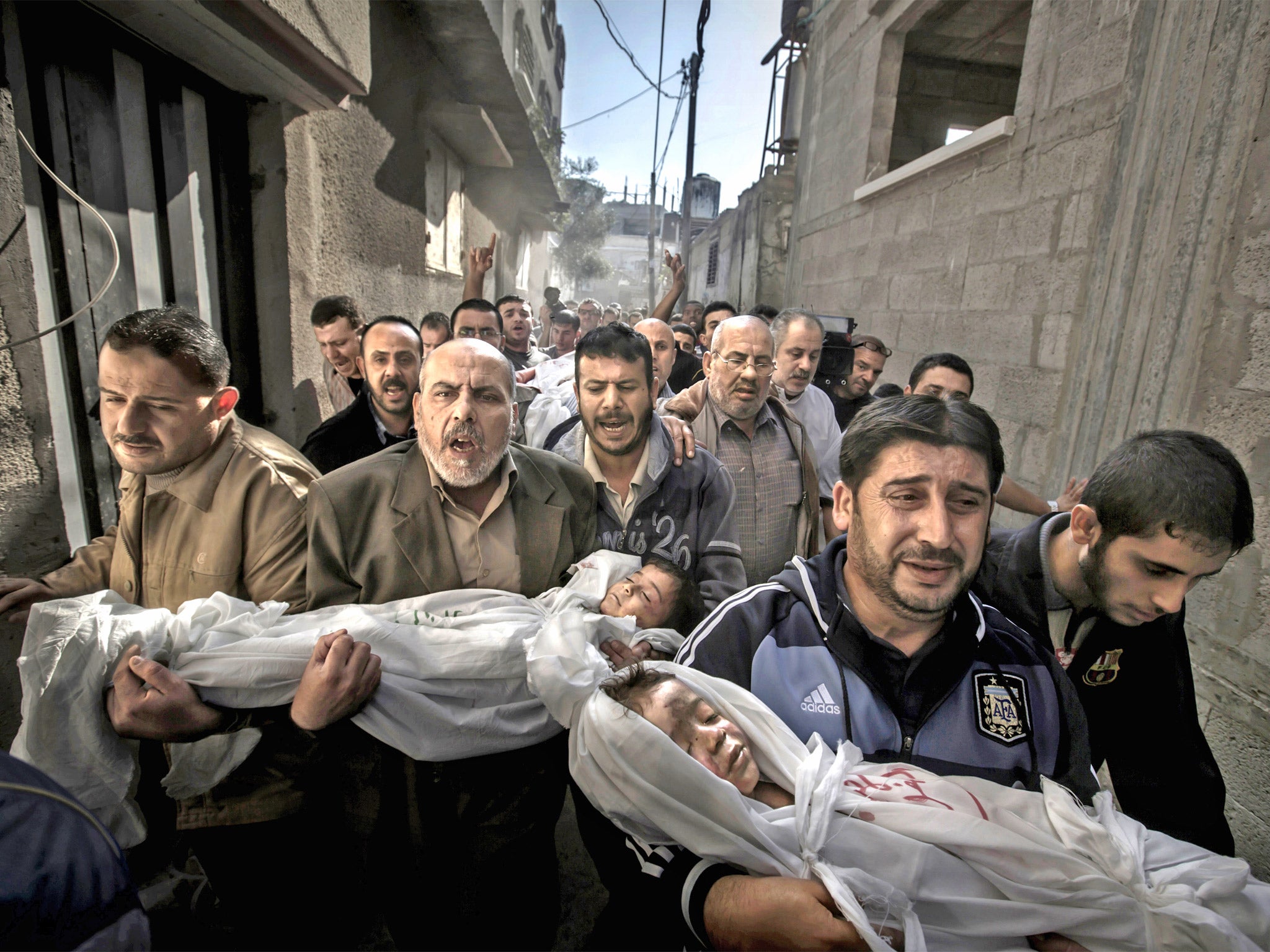World Press Photo winner cleared after 'forensic examination'
'No evidence of significant photo manipulation' but it 'was retouched with respect to colour and tone'

Can a news photograph be enhanced without distorting the truth - and, if so, how much distortion is acceptable before the picture becomes a fake?
It is a question the world of photography is wrestling with after a fierce controversy saw the winning image in the world's most prestigious prize for photojournalism denounced as a "fraudulent forgery".
The World Press Photo Foundation responded to the slur by subjecting the picture to a forensic examination by experts before declaring itself satisfied with the veracity of the image, which was taken by the Swedish photographer Paul Hansen and shows grieving Palestinian man carrying the bodies of two children killed in an Israeli rocket attack on Gaza City.
"It is clear that the published photo was retouched with respect to both global and local colour and tone. Beyond this, however, we find no evidence of significant photo manipulation or compositing," said Hany Farid, professor of computer science at Dartmouth College, and Kevin Connor, Farid's colleague at Fourandsix Technologies.
The accusations against Hansen came from American computer scientist and image analyst Neal Krawetz, who alleged on his Hacker Factor blog that the photograph "is definitely not original".
Claiming to have subjected the picture's Extensible Metadata Platform (XMP) block to testing, he concluded that it had been manipulated by use of the Adobe Photoshop graphics feature to create the prize-winning image in time for the competition's deadline. "Hansen's picture is a composite," he concluded.
He also drew on Error Level Analysis and Shadow Analysis, noting that the picture had been taken in the morning and suggested that shadows in the Gaza alleyway were inconsistent with the positioning of the sun. "So here's what likely happened... The photographer took a series of photos. However, the sun's position made everyone dark and in silhouette. So, he combined a few pictures and altered the people so you could see their faces."
The technology website extremetech.com embraced Krawetz's findings. "The photo itself is almost certainly a composite of three different photos, with various limbs spliced together from each of the images."
Yesterday World Press Photo's experts emphatically rejected these claims - and also questioned Krawetz's methods and techniques. "The XMP analysis reflects an incomplete understanding of the Photoshop metadata," said Farid and Connor. They also argued that his Shadow Analysis was "flawed in its logic and conclusions" and expressed doubt about the value of Error Level Analysis. "This analysis frequently misidentifies authentic photos as altered and fails to identify altered images, and as such is not a reliable forensic tool."
Another of the foundation's experts, the Dutch digital photography expert Eduard de Kam, said analysis of the photo's raw file showed that "there has been a fair amount of post-production, in the sense that some areas have been made lighter and others darker". But he ruled out "any question of a composite image" and said "each pixel" was "exactly in the same place" in the winning shot as it had been in the original raw file.
Hansen's integrity was restored. Despite this, Krawetz posted a fresh blog to say "I feel vindicated" and claimed that Hansen's own acknowledgement of using post-production techniques on the original file for the purposes of "toning and balancing of the uneven light" amounted to an admission. "This is exactly what I have been saying," said Krawetz. "It is a composite."
Respondents to his blog were not impressed. "You are being disingenuous," said one. "You alleged that it was a 'composite', and when that is shown to be false, you're now trying [to] redefine what a composite means." Another commenter wrote: "You have embarrassed yourself. Globally."
Even so, Krawertz has reignited the debate about whether it is acceptable to enhance news pictures. The controversy also raises doubts as to whether computer analysis techniques can reliably identify clever fakes or not.
Sophisticated post-production work has become a standard procedure for many of the world's leading news photographers. Olivier Laurent, of the British Journal of Photography, said the Rome-based company 10b photography was frequently used by some of the world's best known news publications to enhance pictures. A stunning shot for Time magazine by Yuri Kozyrev, showing Libyan rebels leaping from a field gun at the height of the civil war, is among 10b's best-known work, developing the contrasts in colour and tone in the original picture. "It's a matter of taste - some people like the new look and some prefer the original version," said Laurent. "If you move anything or remove anything then you have crossed the line as a photographer - but in Hansen's case he hasn't."
Adrian Evans, director of the Panos picture agency, said that enhancement (High Dynamic Range) procedures were merely used to "highlight certain areas" and were legitimate. He said: "I think there's a tendency to over-Photoshop images but that's a personal judgement."
Join our commenting forum
Join thought-provoking conversations, follow other Independent readers and see their replies
Comments